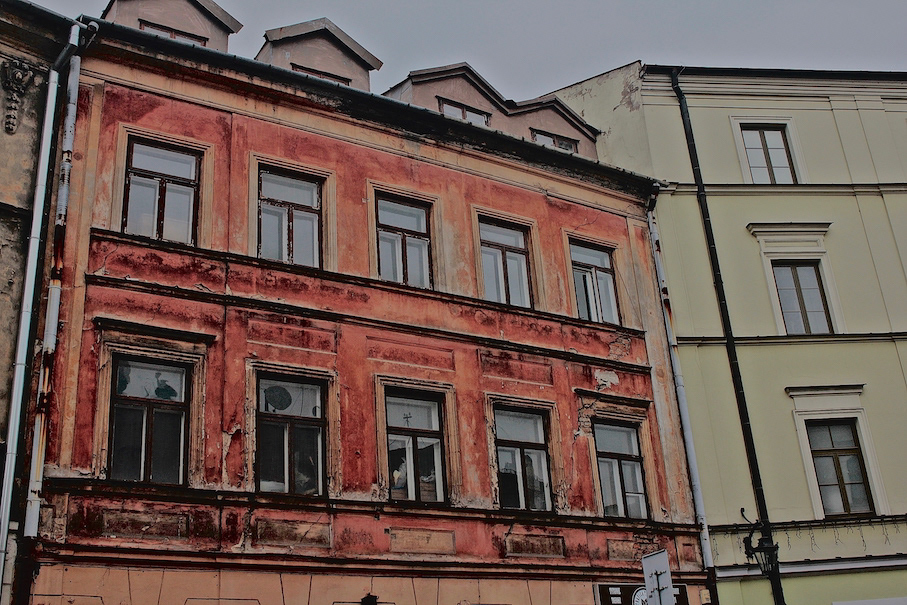
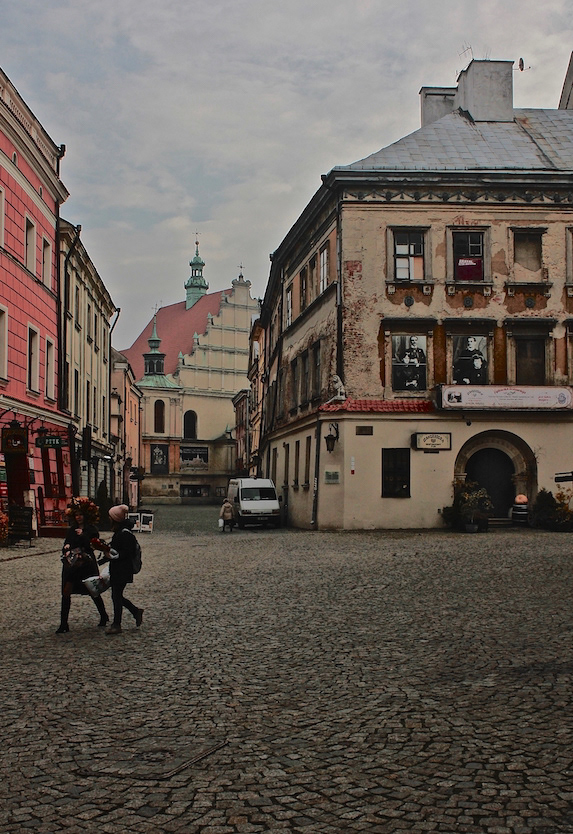


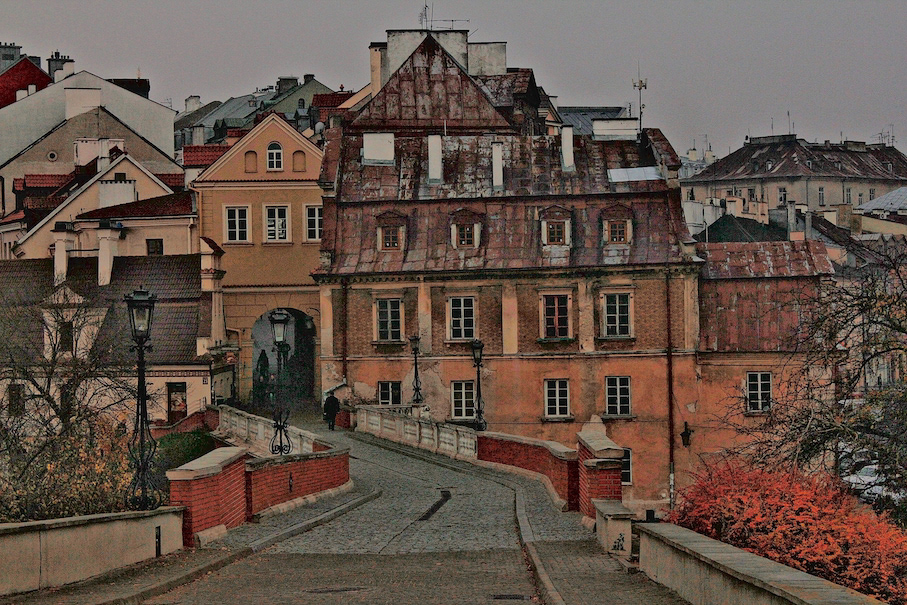
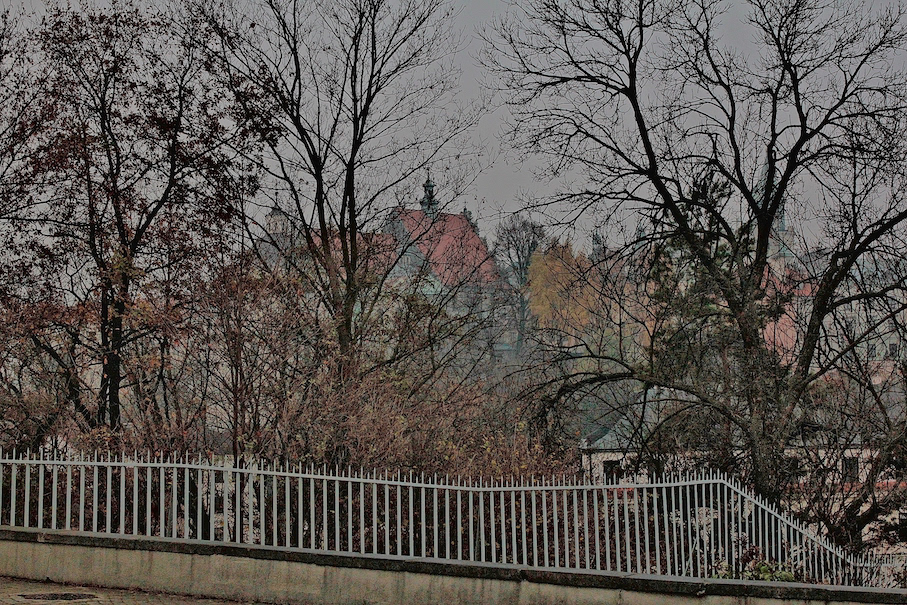

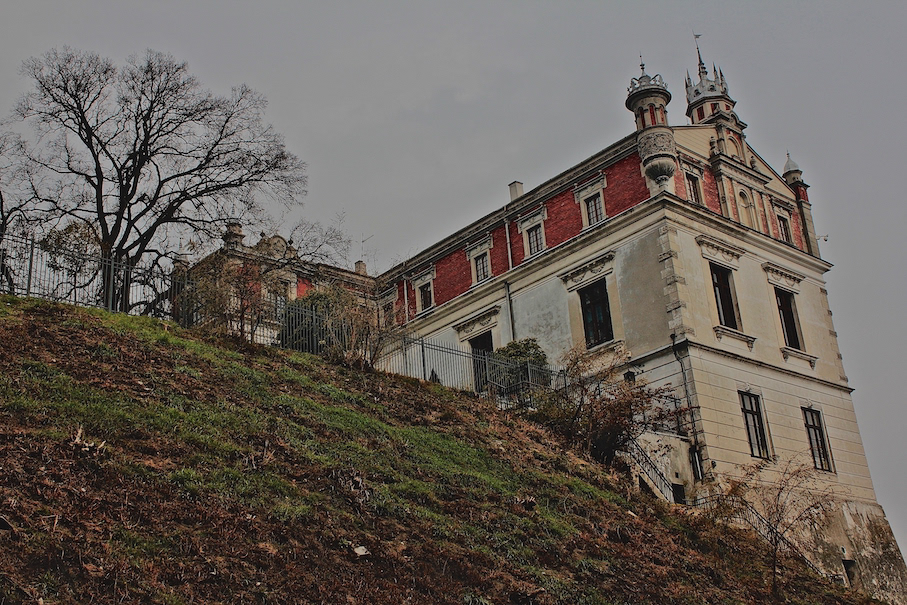
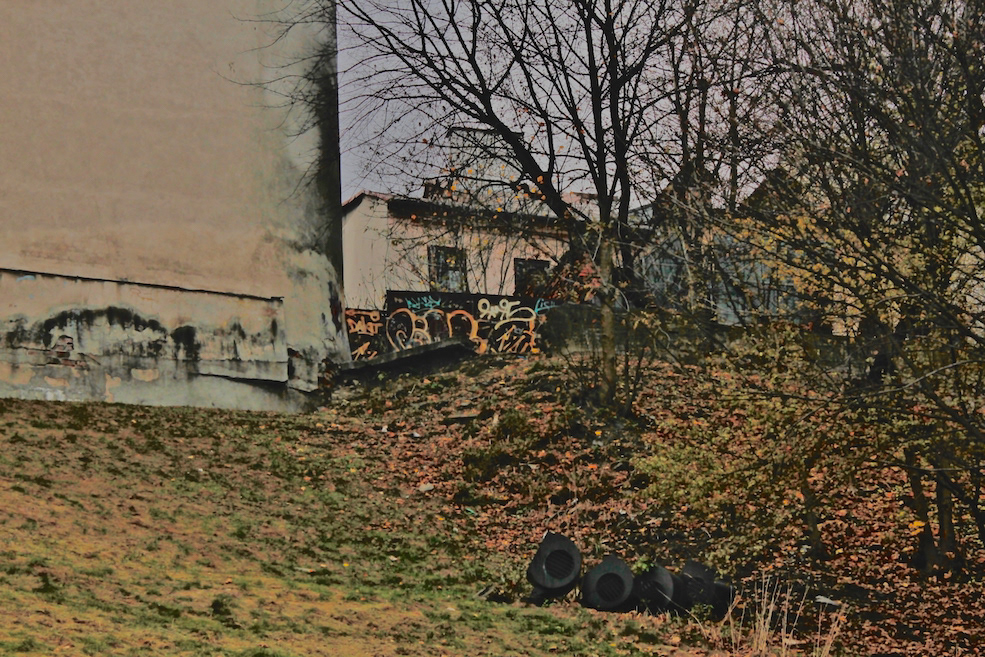
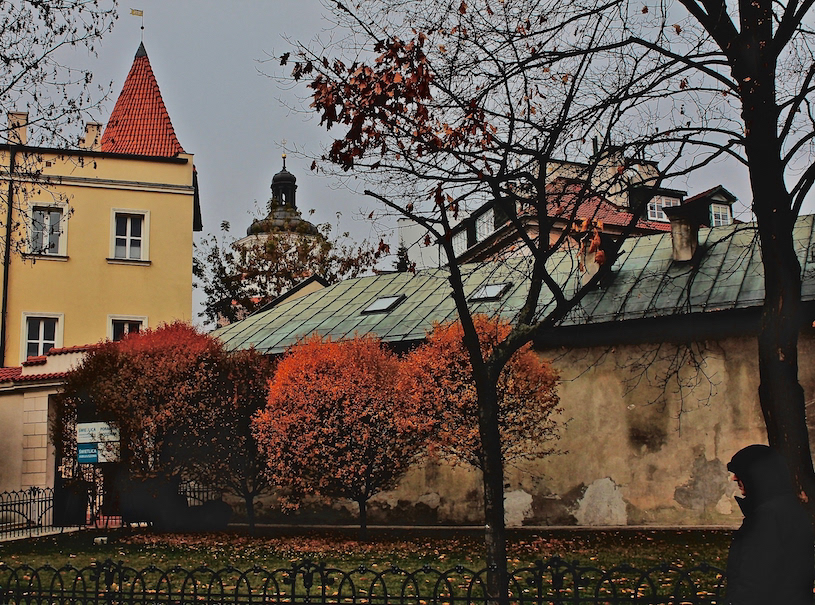
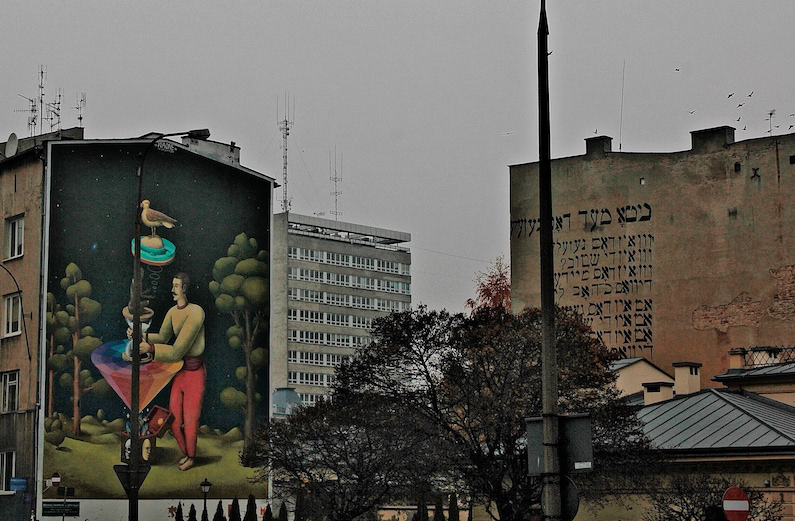
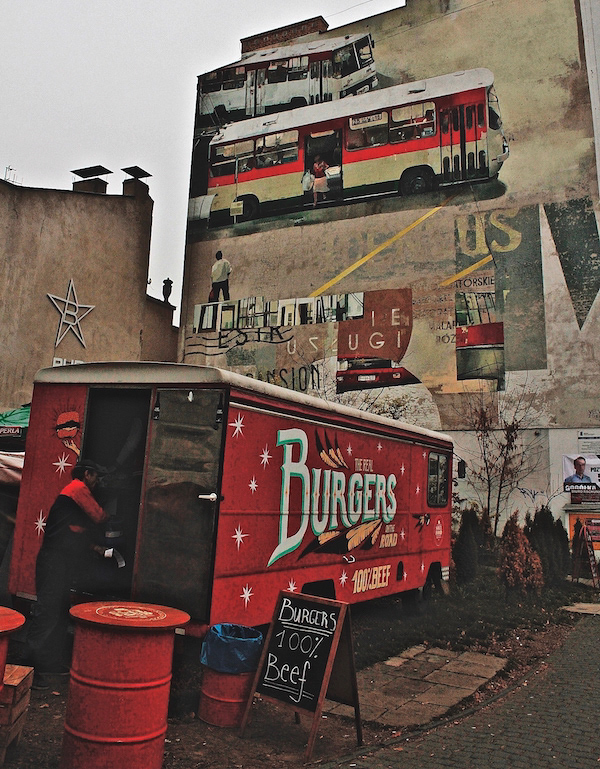
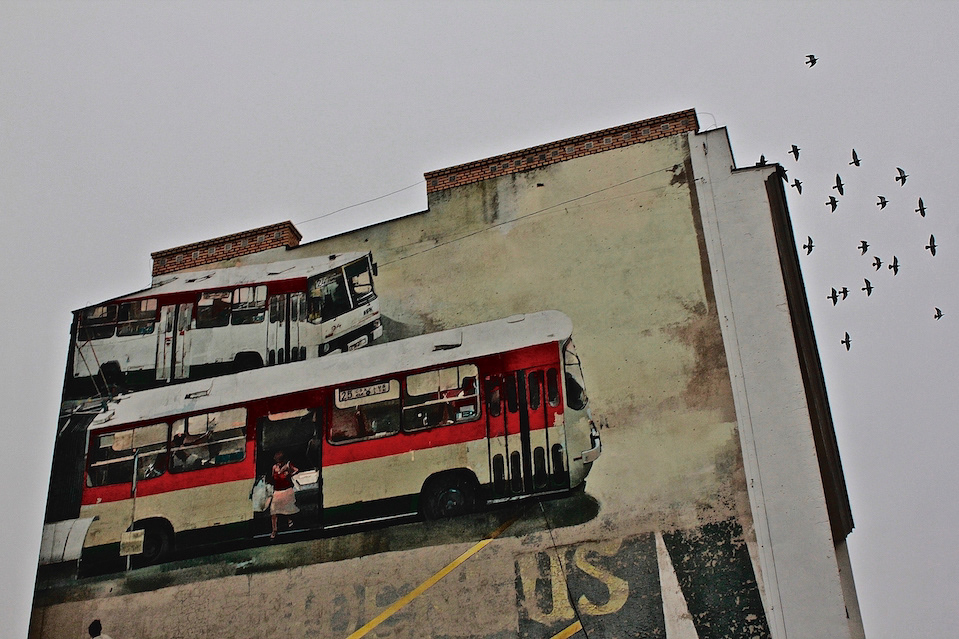

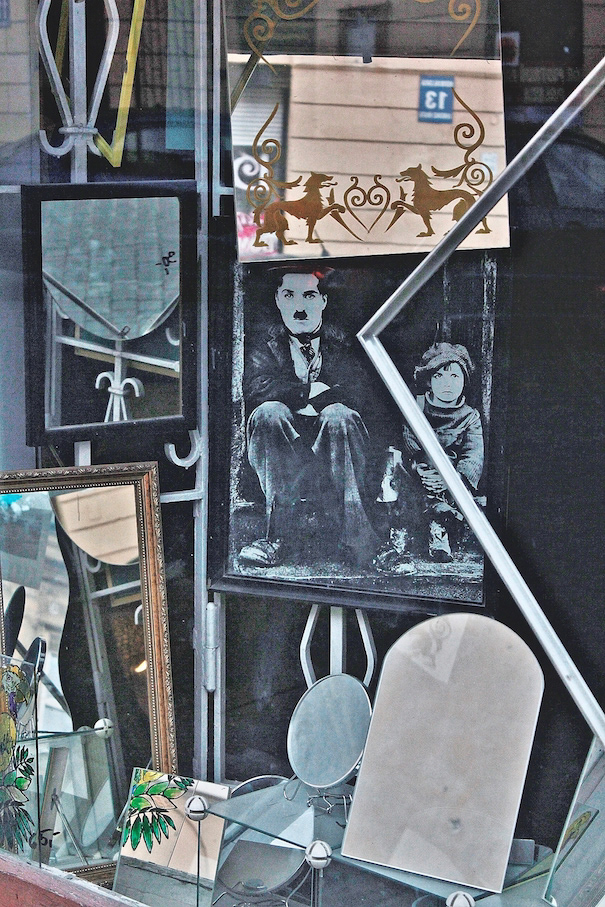
Images produced without manipulation (DSLR Camera, Canon). They are part of a project I undertook while in Poland (March 2015), visiting the cities of Warsaw and Lublin, and also participating in a congress sponsored by the Camões Institute and the Maria Curie-Skłodowska University (Linguagem Portuguesa: Unidade na Diversidade).
The third image is particularly important to me, and I call it "A Paz del tornillo," in reference to Julio Cortázar. As I say in my site, "avail yourself of the modern, the postmodern, and the medieval-archaic alike (we live past eschatology, yes Auschwitz, Hiroshima, terror, antiterror, annihilation & glacial strife). Writing about le sauteur de flaque, Pierre Assouline says the device scans (l'appareil scrute, always the same anagram) the rumor by digging in the rubbings. Que dire de cette petite affiche dans le fond? Everywhere il y a des affiches. Insignia of plasticity itself."
Concerning the last image, the casual views of shop windows or other complex street surfaces appear in other of my projects. An important point is that parts of these views are often unfolded and disentangle in a play of glass reflexes. Duchamp chose glass so that the background of paintings such as The Bride could change. But there are also effects to be seen in a phantasmatic foreground (and photography cristalizes them).
Apart from such inframince effects, there is intrinsic interest in the mere assemblage of objects (whose casual and complex configuration is accentuated according to the angle the image is captured). This leads to a "haphazard" kind of poetry that comes spontaneously out of ordinary things (mainly human artefacts), having an aleatory flavour and at the same time expressing some kind of more essential, or vital, elemental aspect of "life" itself.
Dadaists and surrealists were on the track of such experiences (that can emerge in quite different kinds of media), as when Arp says "often I shut my eyes and chose works and sentences in newspapers by underlining them with a pencil. I called these poems 'Arpaden'... We thought to penetrate through things to the essence of life, and so a sentence from a newspaper gripped us as much as one from a prince of poets" (Wegweiser, 1953, translated into English and quoted by Matthew Gale in his Dada & Surrealism).
The following quotation is useful:
"Sometimes the little times you don't think are anything while they're happening turn out to be what marks a whole period of your life."
"A person can cry or laugh... when you are crying you could be laughing... Crazy people know how to do this best because their minds are loose."
"A four-foot-two old lady was crossing Park Avenue at 65th Street. She had frizzy red hair and was wearing black gloves, a pink sweater, a black dress, red shoes, and she was carrying a red bag. She was hunchbacked. I don't know why, but she seemed like someone we would know" (Andy Warhol).
"The next time you direct your hipnotized eyeballs toward your lit-up terminal, remember that it was cheerful Charlie Chaplin who first accustomed our species to accept the implausible quantum reality of electrical impulses flashing on a flat screen" (Timothy Leary).
"The partition of Poland had been prepared in August, when the German and Soviet Foreign Ministers, Joachim von Ribbentrop and Vyacheslav Molotov, signed a non-aggression pact... Stalin's opportunistic collaboration [with Hitler] was underlined in the Red Army's simultaneous attack on Finland" (Matthew Gale).
"Ich bin ein polnischer Edelmann pur sang, dem auch nicht ein Tropfen schlechtes Blut beigemischt ist, am wenigsten deutsches... als Pole bin ich ein ungeheurer Atavismus"(Nietzsche).
